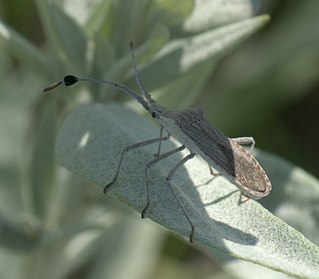
Carpocorini is a tribe of stink bugs in the family Pentatomidae. There are about 15 genera and at least 50 described species in Carpocorini.

Niesthreini is a tribe of scentless plant bugs in the family Rhopalidae. There are at least 2 genera and about 17 described species in Niesthreini.
Lethaeini is a tribe of dirt-colored seed bugs in the family Rhyparochromidae. There are about 5 genera and 13 described species in Lethaeini.
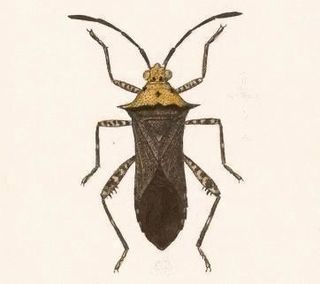
Zicca is a genus of leaf-footed bugs in the family Coreidae. There are about 19 described species in Zicca.

Acanthocephalini is a tribe of leaf-footed bugs in the family Coreidae. There are about 15 genera and at least 100 described species in Acanthocephalini.

Namacus is a genus of leaf-footed bugs in the family Coreidae. There are at least four described species in Namacus.

Ceraleptus is a genus of leaf-footed bugs in the family Coreidae. There are about nine described species in Ceraleptus.

Pseudophloeinae is a subfamily of leaf-footed bugs in the family Coreidae. There are at least 20 genera and 100 described species in Pseudophloeinae.

Hypselonotus is a genus of leaf-footed bugs in the family Coreidae. There are about 12 described species in Hypselonotus.

Harmostini is a tribe of scentless plant bugs in the family Rhopalidae. There are at least two genera and about eight described species in Harmostini.
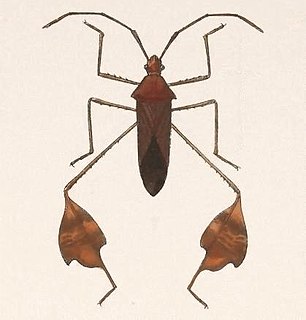
Anisoscelis is a genus of leaf-footed bugs in the family Coreidae. There are about 12 described species in Anisoscelis.
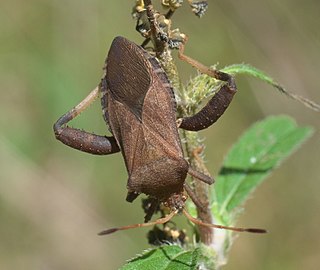
Acanthocerini is a tribe of leaf-footed bugs in the family Coreidae. There are at least 20 genera and 50 described species in Acanthocerini.

Spartocera is a genus of leaf-footed bugs in the family Coreidae. There are about 18 described species in Spartocera.
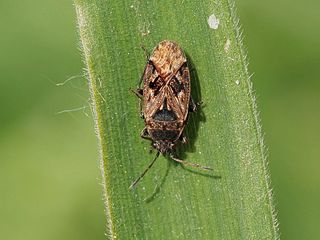
Megalonotini is a tribe of dirt-colored seed bugs in the family Rhyparochromidae. There are at least three genera and about five described species in Megalonotini.

Cimolus is a genus of leaf-footed bugs in the family Coreidae. There are at least four described species in Cimolus.

Narnia is a genus of leaf-footed bugs in the family Coreidae. There are about seven described species in Narnia.
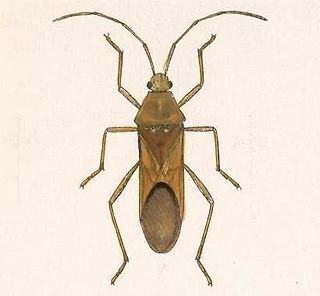
Discogastrini is a tribe of leaf-footed bugs in the family Coreidae. There are about 8 genera and at least 40 described species in Discogastrini.
Mamurius is a genus of leaf-footed bugs in the family Coreidae. There are at least two described species in Mamurius.
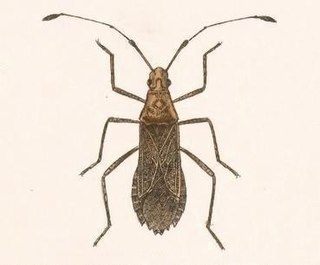
Madura is a genus of leaf-footed bugs in the family Coreidae. There are at least three described species in Madura.


